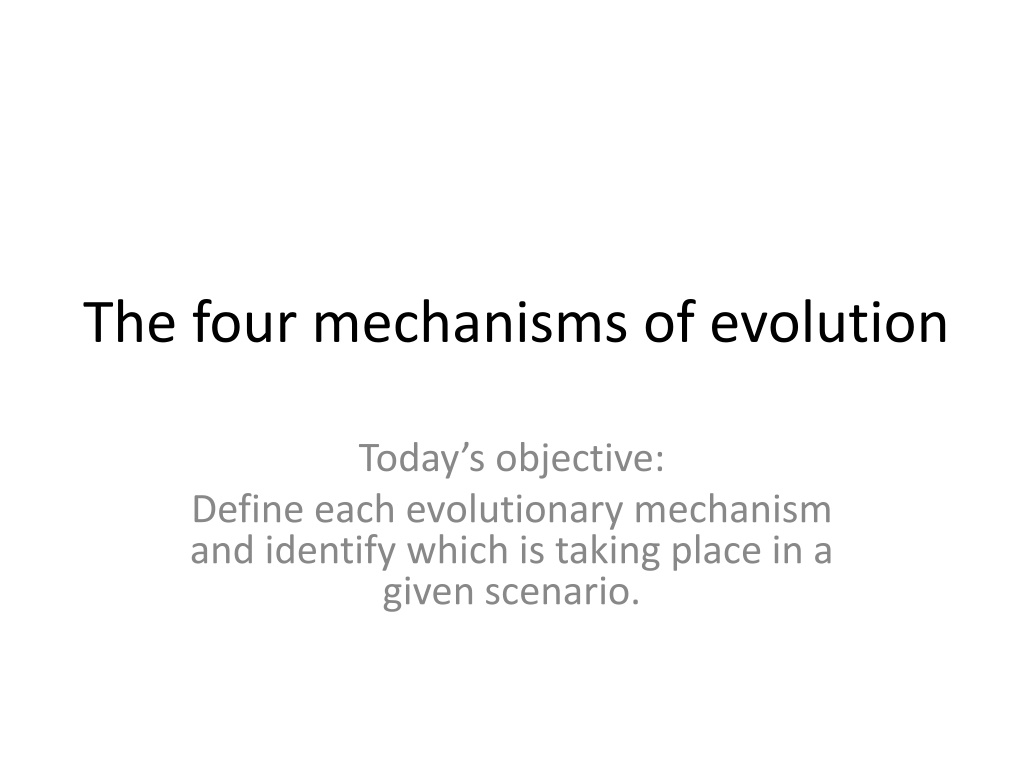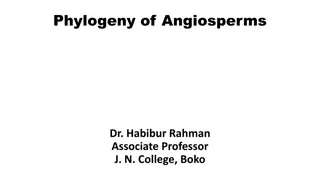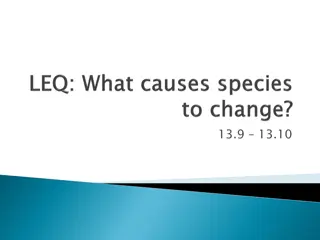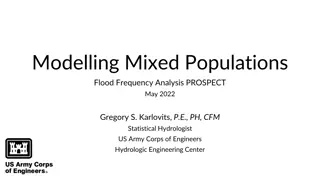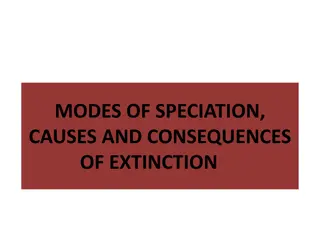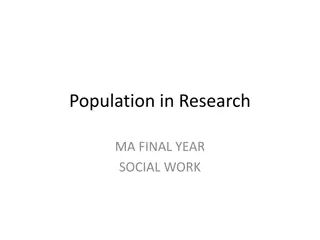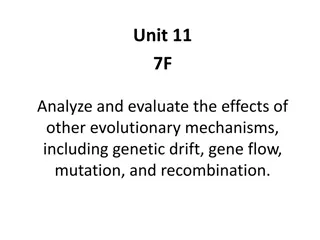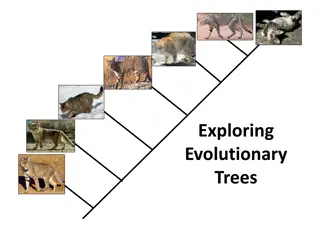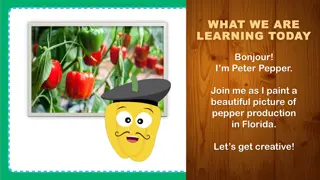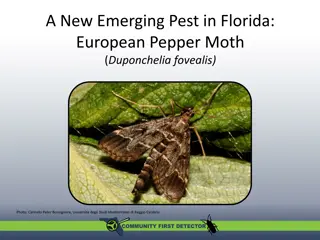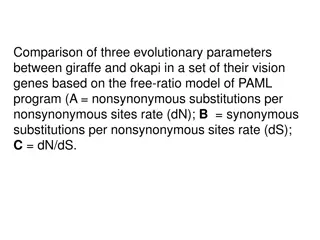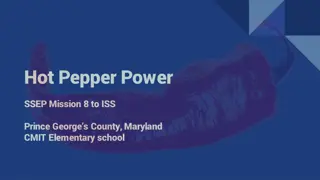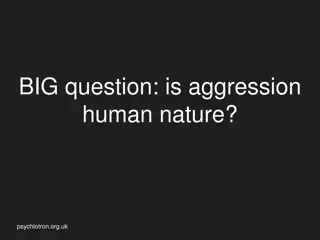Understanding Evolutionary Mechanisms in Pepper Populations
Explore the evolutionary mechanisms of natural selection and genetic drift through a fun activity involving a wild chili pepper population. Witness how chemical defense affects the survival and reproduction of pepper plants against herbivores and pathogens. Learn about the concepts of mutation, gene flow, genetic drift, and natural selection in the context of evolution.
Download Presentation

Please find below an Image/Link to download the presentation.
The content on the website is provided AS IS for your information and personal use only. It may not be sold, licensed, or shared on other websites without obtaining consent from the author. Download presentation by click this link. If you encounter any issues during the download, it is possible that the publisher has removed the file from their server.
E N D
Presentation Transcript
The four mechanisms of evolution Today s objective: Define each evolutionary mechanism and identify which is taking place in a given scenario.
CQ: Evolution results in a better match of an organism and the environment? 1. Yes 2. No 3. Sometimes 0% 0% 0% No Yes Sometimes
How does evolution occur? Via one or more mechanisms: Mutation Gene flow Genetic drift Natural selection How do we measure if evolution has occurred?
Hot Chilies! You represent a population of the wild chili plant, Capsicum chacoense native to Bolivia, Argentina, and Paraguay A plant can be chemically defended against insect herbivores and fungal pathogens by producing capsaicin or not.
Getting started Record a series of six numbers, selected from 1 to 10, in your notebook (e.g. 2, 7, 3, 3, 8, 1) We will run six iterations of reproduction of your chili pepper population: 3 modeling natural selection and 3 modeling genetic drift. Following each iteration, you should record the class histogram in your notes.
Lets look at the distribution of chemical defense in our population. 50% 50% CQ: Stand up and poll your color. 1. Pink (spicy) 2. Yellow (sweet) Yellow (sweet) Pink (spicy)
Iteration 1a: if you picked 6 or less and you have a yellow card, then sit down because your chili plant has died. 33% 33% 33% If you survived, you successfully produce one offspring. CQ: Which one describes your pepper? 1. Pink and reproduced 2. Yellow and reproduced 3. Perished Perished. Yellow and rep... Pink and repro...
Iteration 1b: if you picked 5 or more and you have a yellow card, then sit down because your chili plant has died. 33% 33% 33% If you survived, you successfully produce one offspring. CQ: Which one describes your pepper? 1. Pink and reproduced 2. Yellow and reproduced 3. Perished Perished. Yellow and rep... Pink and repro...
Iteration 1c: if you picked 1,3,5,7,9, or 10 and you have a yellow card, then sit down because your chili plant has died. 33% 33% 33% If you survived, you successfully produce one offspring. CQ: Which one describes your pepper? 1. Pink and reproduced 2. Yellow and reproduced 3. Perished. Perished. Yellow and rep... Pink and repro...
What just happened? Discuss with your neighbor: Which of the four mechanisms just occurred? How would this occur in real-world terms? (i.e. translate the instructions for which plants died into a real-world scenario) What are general attributes of this mechanism?
CQ. Why does the capsaicin trait continue to persist in wild chili plant populations? 1. The persistence of the trait is favorable for the species. 2. Individuals that produce capsaicin were more likely to have offspring that survived. 3. The fungal pathogen only targets the plants with capsaicin. 4. The capsaicin trait continues to occur due to chance alone.
Iteration 2a: regardless of color, if you picked 2, 4, or 6, then sit down because your chili plant has died. 25% 25% 25% 25% If you survived, you successfully produce one offspring. CQ: Which one describes your pepper? 1. Pink and reproduced 2. Yellow and reproduced 3. Perished. Perished. Yellow and rep... Pink and repro... CQ: Which one ...
Iteration 2b: regardless of color, if you picked 5, 7, or 9, then sit down because your chili plant has died. 25% 25% 25% 25% If you survived, you successfully produce one offspring. CQ: Which one describes your pepper? 1. Pink and reproduced 2. Yellow and reproduced 3. Perished. Perished. Yellow and rep... Pink and repro... CQ: Which one ...
Iteration 2c: regardless of color, if you picked 4, 5, or 6, then sit down because your chili plant has died. 25% 25% 25% 25% If you survived, you successfully produce one offspring. CQ: Which one describes your pepper? 1. Pink and reproduced 2. Yellow and reproduced 3. Perished. Perished. Yellow and rep... Pink and repro... CQ: Which one ...
What just happened? Discuss with your neighbor: Which of the four mechanisms just occurred? How would this occur in real-world terms? (i.e. translate the instructions for which plants died into a real-world scenario) What are general attributes of this mechanism?
Lets compare the six histograms from our simulation. What is similar in the first three and how is that different from the second three?
Evolutionary mechanism Definition Was there a relationship between phenotype and survival? Is a higher percentage of individual protected from pathogens? Has adaptation occurred? Has evolution occurred? Natural selection Genetic drift Gene flow Mutation
There are two remaining mechanisms
What about when seeds disperse? Migration (or gene flow) refers to when individuals (and their genes) move from one population to another. How could we simulate migration with our notecard activity? Write down a set of instructions and sketch the resulting histogram.
What about if a plant mutates and produces a new chemical that is sweet and tasty? Mutations can be deleterious or beneficial, and can result in a new trait appearing in a population. It can also cause an individual s offspring to switch to another phenotype that exists in the population. How could we simulate mutation with our notecard activity? Write down a set of instructions and sketch the resulting histogram.
When a population evolves, Gene frequencies change. This can be a result of Selection favoring one phenotype over another. Genetic drift causing one phenotype to increase with or without a concomitant increase in fitness. Gene flow introducing (or removing) individuals to the population. Mutation that converts some individuals from one phenotype to another.
CQ: Which of the following is a key difference between natural selection and genetic drift? Drift occurs in the absence of natural selection. Drift favors the phenotype that increases survival, while selection generates a shift in frequencies towards the more common phenotype. Drift generates a random shift in phenotypic frequencies, while selection generates a shift toward the environmentally favored phenotype. Drift is directed towards the less favored phenotype, while selection is directed toward the more favored phenotype. 1. 2. 3. 0% 0% 0% 0% 4. Drift generate... Drift is direc... Drift favors t... Drift occurs i...
CQ: Evolution results in a better match of an organism and the environment. 1. Yes 2. No 3. Sometimes 0% 0% 0% No Yes Sometimes
